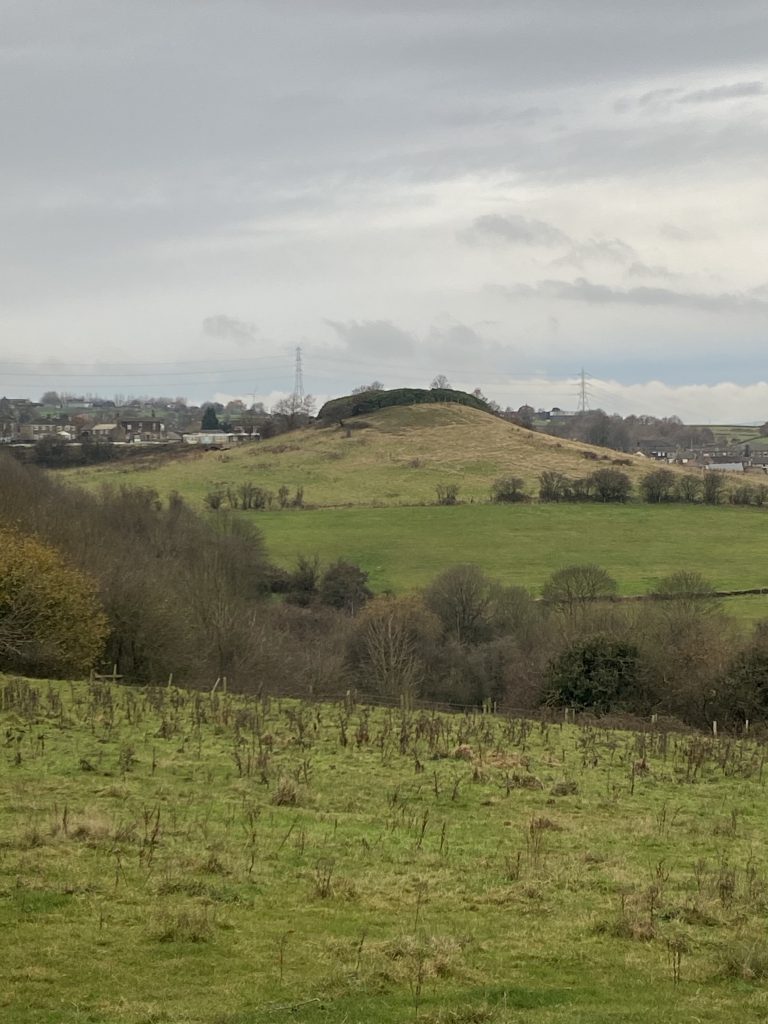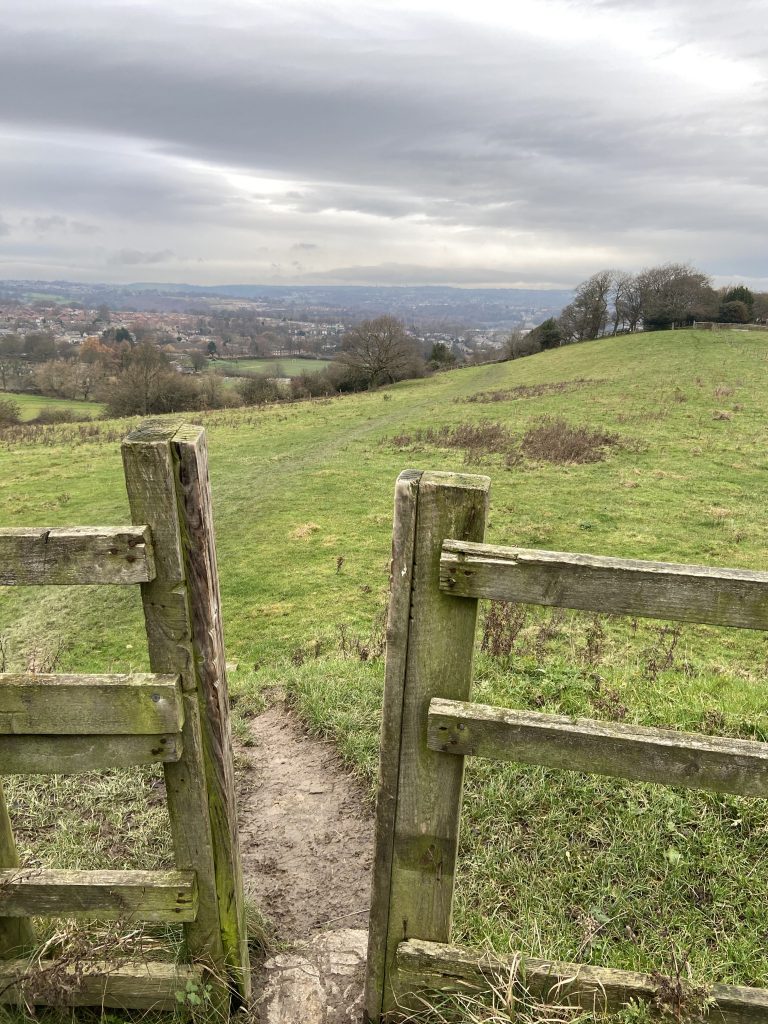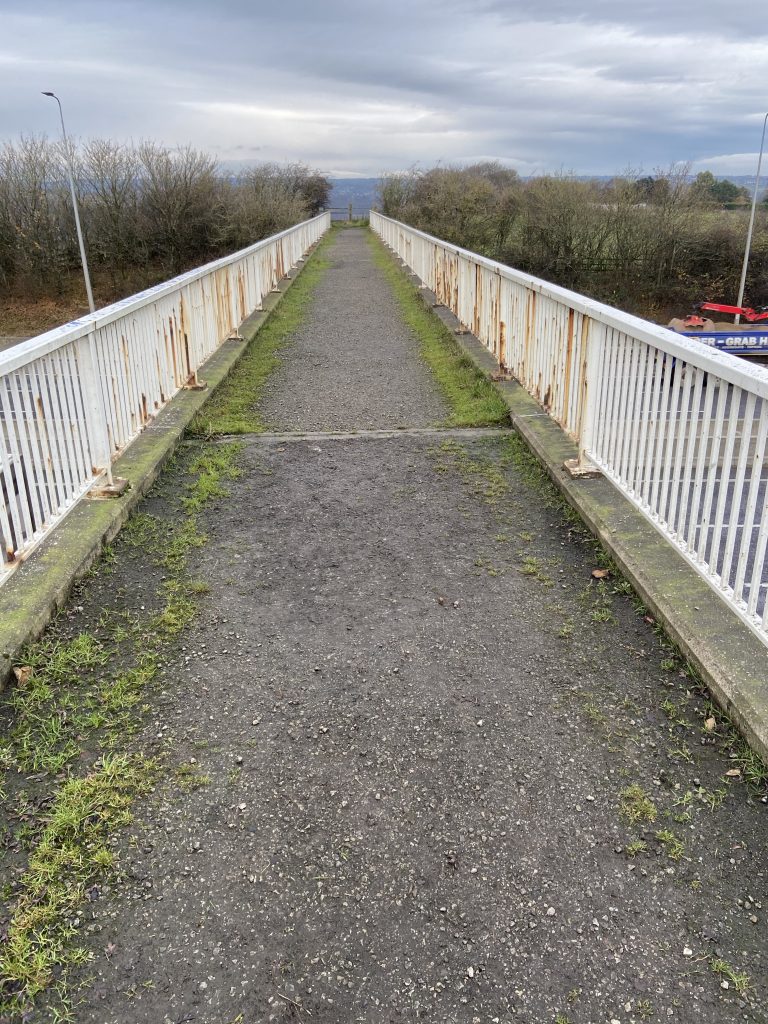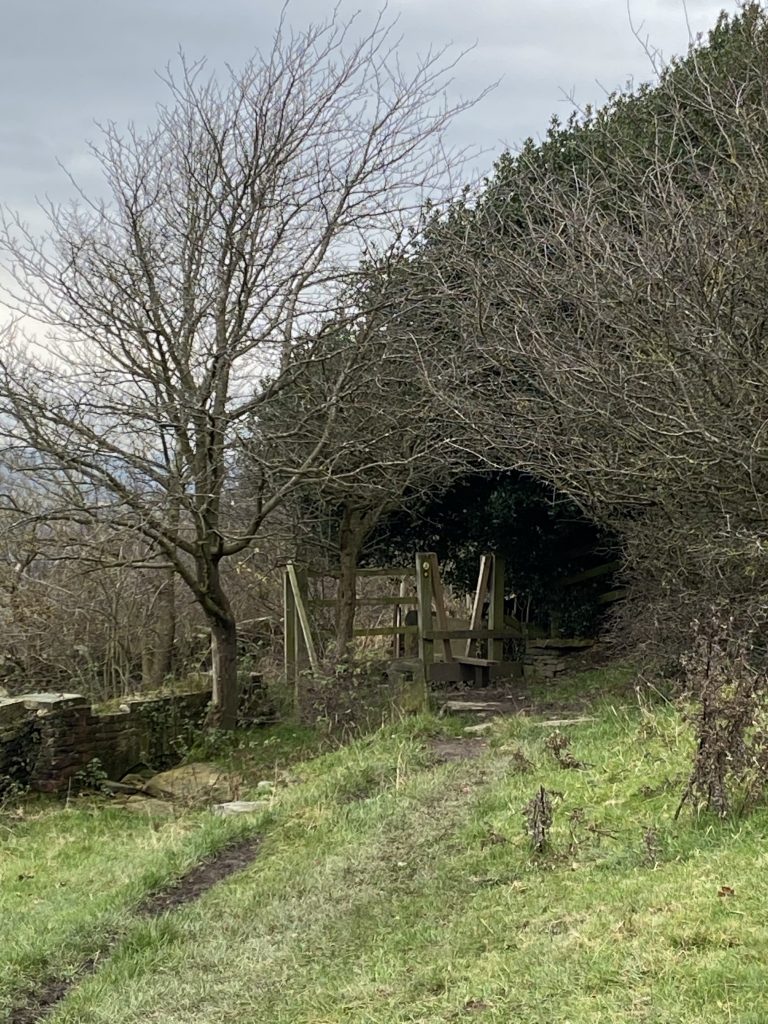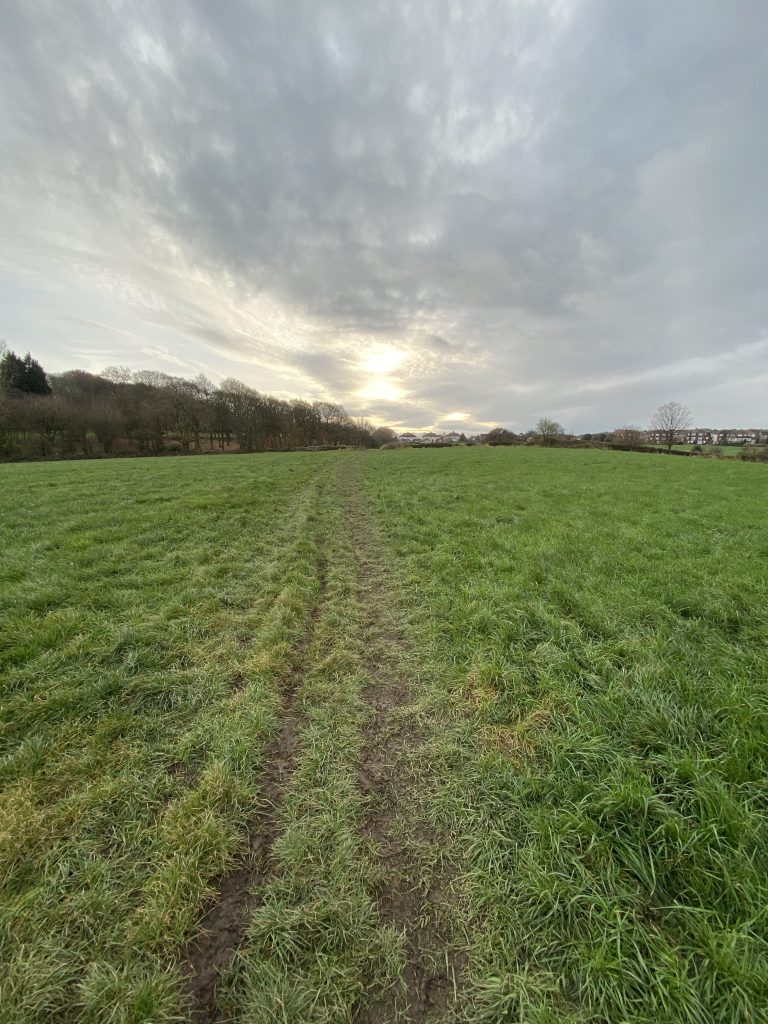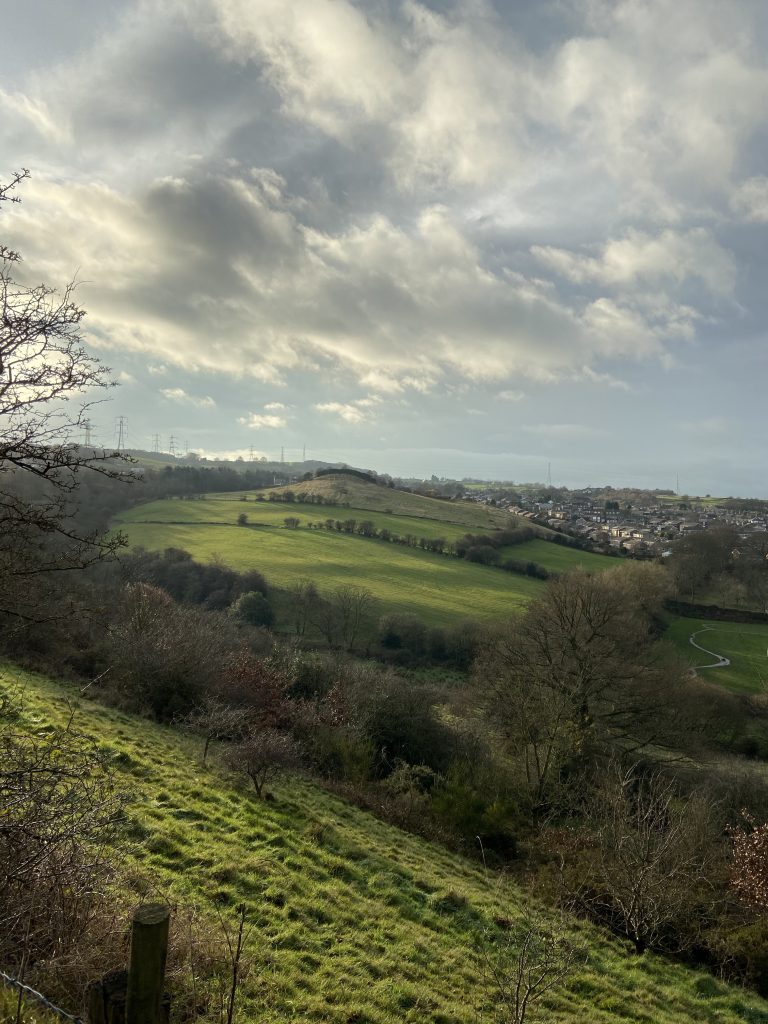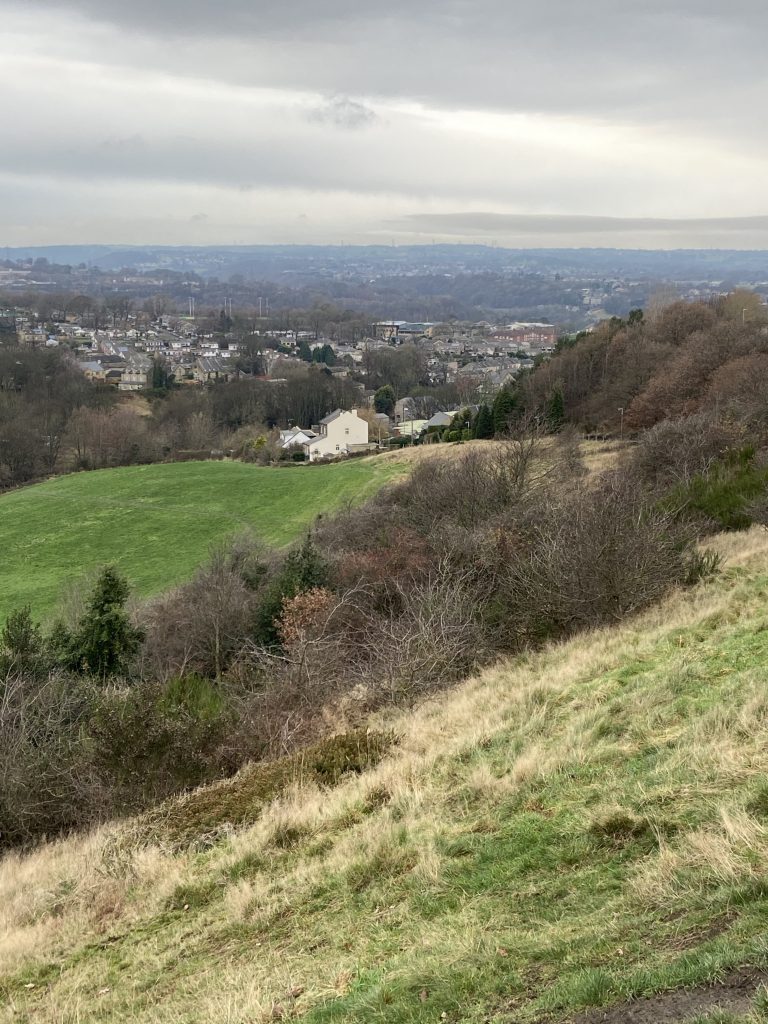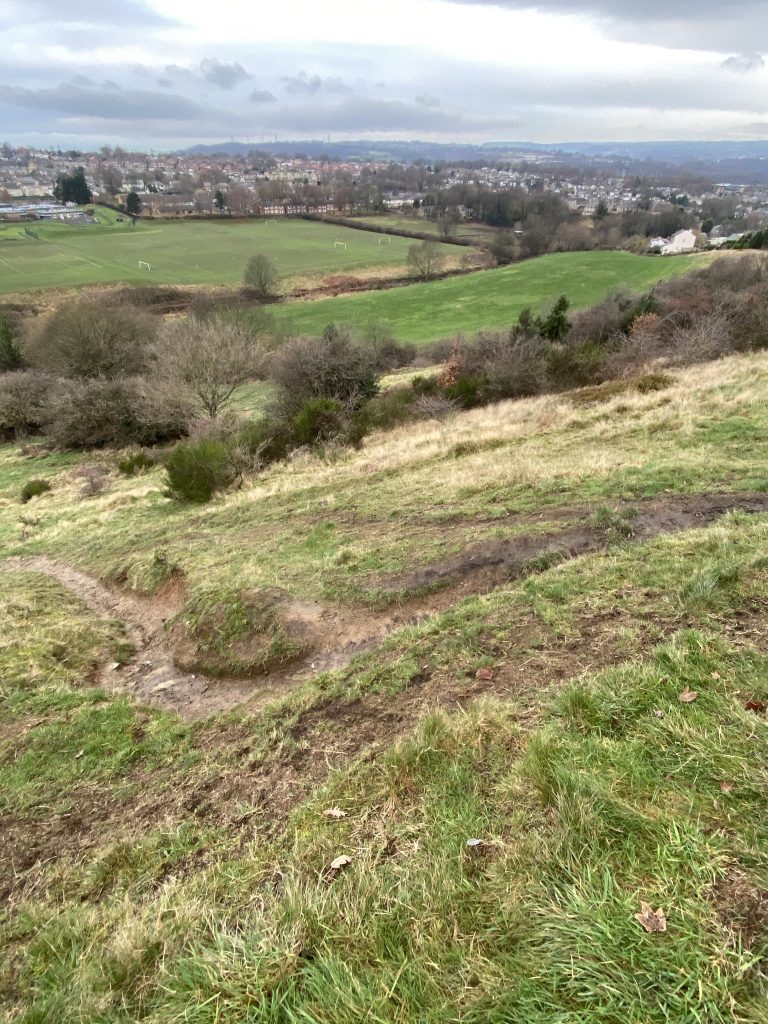WAS ASA FARRAR REALLY A HIGHWAYMAN?
In Rastrick, there is a pleasant walk along an ancient roadway known locally as New Dick. Before the M62 motorway bisected this track in the early 1970’s, it was a continuous route between the top of Toothill Bank and the Clough House Inn. Nowadays, the route takes a diversion through fields and over a footbridge above the motorway. There are great views looking over Carr Green and across to Round Hill and it is favoured by many local dog-walkers.
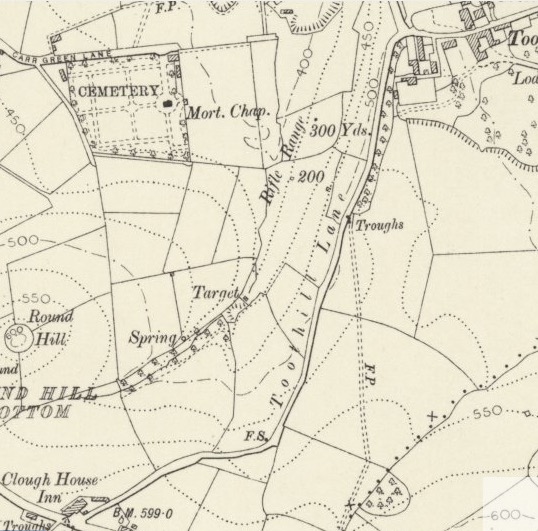
On this 100+ year old map, New Dick is shown as Toothill Lane. When travelling from the top of the map you come to the word ‘Troughs’. At this location there are still two water troughs which are filled from a natural spring. They were used to water the horses that many years ago hauled the horse-drawn traffic along what was an important highway. You can see that a footpath (F.P.) comes off Toothill Lane and travels through a field. This is the route that now takes walkers over the motorway bridge where they can continue straight ahead and the path comes out opposite Fixby Stores or you can deviate down towards Toothill Lane again on the south side of the motorway, which brings you onto Clough Lane by the Four Sons Inn (previously the Clough House Inn)

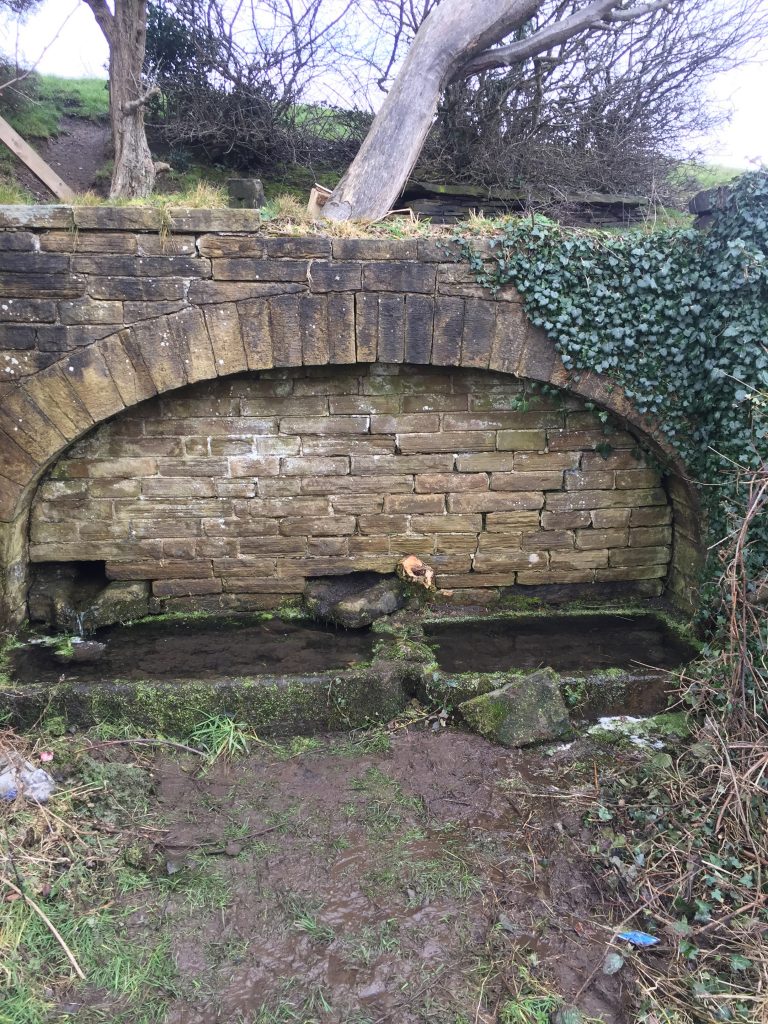

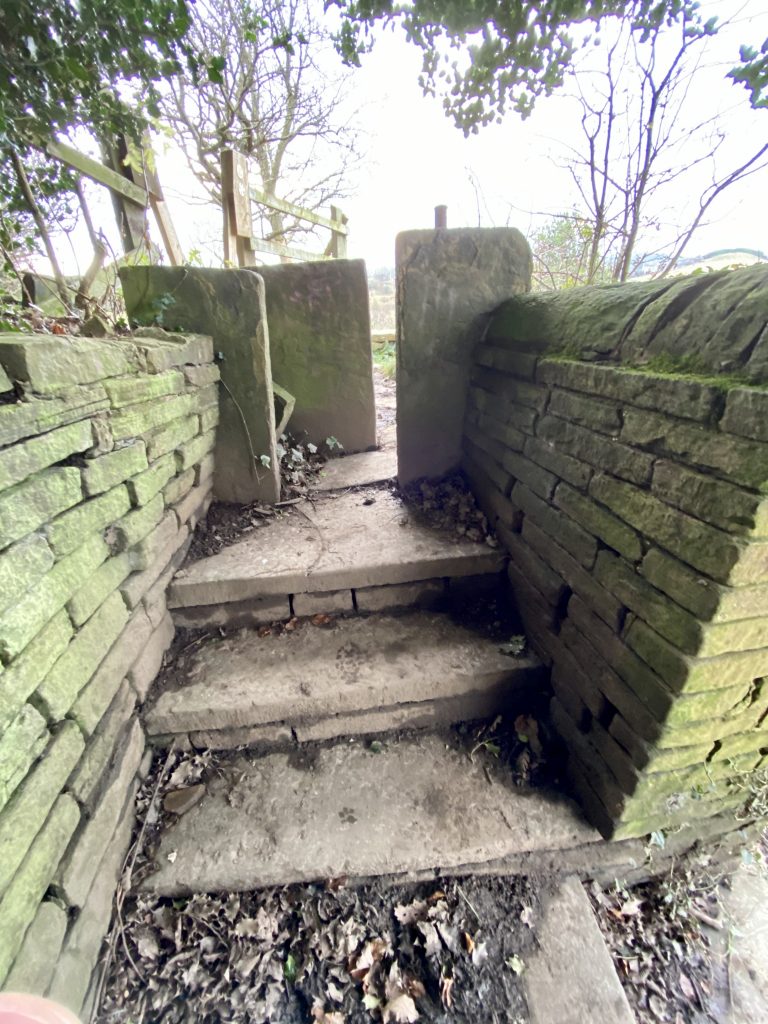
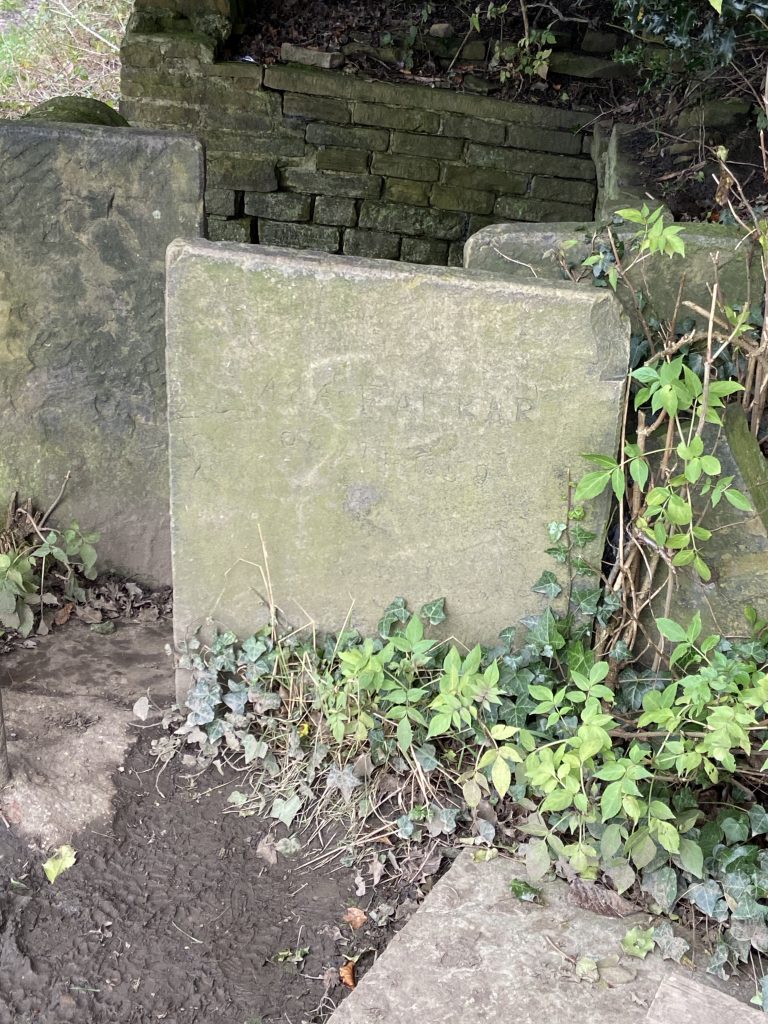
Looking along New Dick towards Toothill with the old dry stone wall dividing the road from farm land belonging to Toothill Hall.
The horse troughs on New Dick. The left hand trough is filled by water running in to the left of the trough. When full, it overflows into the slightly lower trough to the right.
Walkers now have to exit New Dick through this gate and walk across the fields towards Fixby and the former Clough House Inn (now Four Sons Inn).
These steps are just through the gate and lead to the stone stile that forms the basis of our story.
The stone stile upon which Asa Farrar carved his name in 1859 which became the story of many myths and legends.
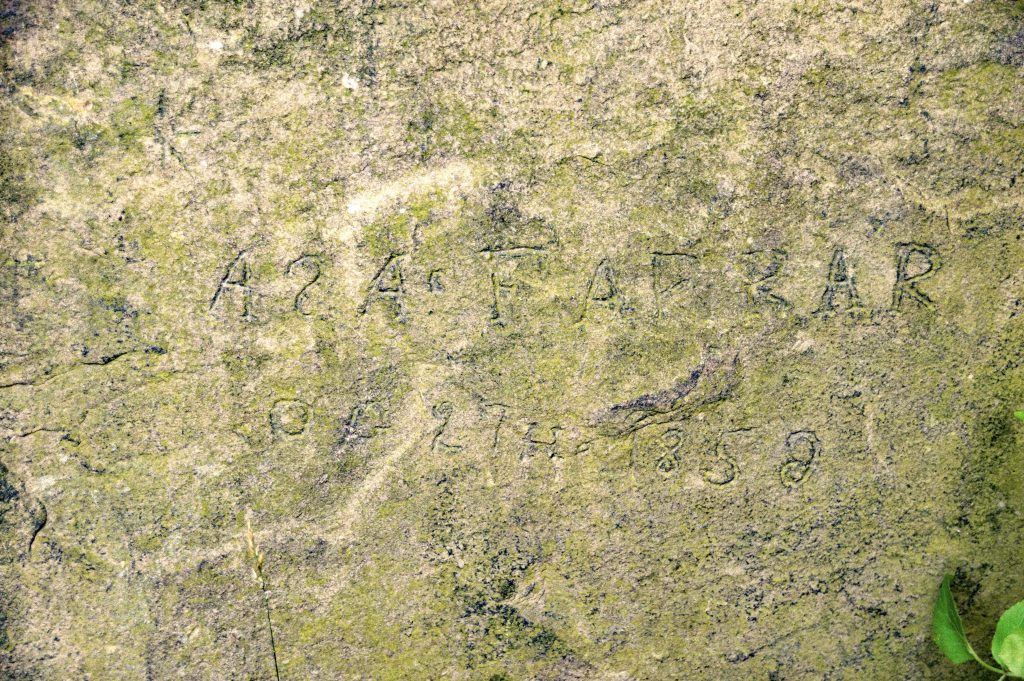
The stone is carved ASA FARRAR (the ’S’ is the wrong way around), OC 9TH 1859
There are many stories about how and why Asa Farrar carved his name on this chunk of Elland Flagstone. The fact of the matter is that we will probably never know the correct story. The most dramatic tale tells of Asa Farrar being a highwayman who had lain in wait for a victim on this dark secluded road. His attempt to hold up a stagecoach failed and he was overpowered and executed on the spot by being hung from a nearby tree. Did the carriage occupants then carve his name and the date upon a stone before continuing their journey? I think not.
Another story suggests that Farrar had decided to commit suicide and hang himself from a nearby tree but before doing so, he carved his details into the stone, making it appear like a gravestone. Would a person who was so desperate, whilst carrying a rope, a chisel and hammer, really kneel down for an hour and carve his name into a stone before taking his own life?
Whilst both of these stories are somewhat incredible, many of the Victorian residents of the area believed the tales and many would not walk alone along New Dick, especially at night, fearing that the restless spirit of the deceased was haunting the surrounding fields. The most probable story is that Asa Farrar carved his name into the stone simply because that was what lads did in those days. What is certain is that Asa Farrar was a real person and did exist.
So who was Asa Farrar? He was the son of John Farrar (1811-1874) of Top of t’Hill, Rastrick and his wife Susanna (1803-1875) and was born on the 19th April 1836 and baptised at St, Matthew’s Church on the 22nd May the same year. Top of t’Hill was a small area off Toothill Bank and it is a bit of a mystery as to why it was so named because it was actually at the bottom of the hill.

By 1851, just prior to his 15th birthday, he was residing with his parents and siblings at Oaks Green, Rastrick. His father was a dyer whilst Asa was employed as a fancy weaver, a common occupation in Rastrick at that time. This term referred to the manufacture of fancy cloth, which was used for the fashionable waistcoats of the day.

At the age of 22 years, Asa Farrar married Hannah Iredale of Lindley at St. Peter’s Parish Church, Huddersfield on the 26th December 1858. Hannah came from Lindley but the marriage certificate incorrectly states that her surname was Idle, however, the Iredale name has been provided by a family member. Asa was also from Lindley. Whether he had temporarily moved there I am not certain but if he had, he was back in Rastrick two years later. By this time, he was working as a dyer according to his marriage certificate.

Once married, Asa and his wife Hannah moved to Greenhead, Rastrick, which I assume is the same road that is now called Greenhead Lane, between New Hey Road and Garlick Street. Asa carved his name on the New Dick stone just over nine months after his wedding and one would imagine it to be one of the happiest stages of his life, not a time when he should be contemplating suicide.

The couples first child was born in January 1861 and was a boy named Squire, the same name as one of Asa’s elder brothers.

Asa had another elder brother, Richard, who was a cordwainer or shoemaker by trade. He was born in 1829 and was almost seven years older than his younger brother. Richard’s first wife, Alice Shaw died just over two years after their wedding day in 1853. He remarried in 1861 and set up his shoemaking business at Millgate in Delph town centre.
On the 14th February 1864, Asa went to visit his brother and along with another man, they had been drinking in pubs around Delph but on their way home, they came across the landlord of the Fleece Inn who was returning from tending to a sick cow. The three men followed the landlord into his pub but he refused to serve them. Police Constable Preston was on duty nearby and when he arrived at the scene he told the men to go home and, knowing Richard Farrar, expressed surprise at his behaviour at that time on a Sunday morning. Richard Farrar told the officer that he would do what he wanted and struck the officer. PC Preston then attempted to arrest Richard Farrar at which point Asa Farrar struck the officer with a stick and then kicked him to the ground. Both men continued to assault the officer until assistance came at which Asa ran off into the night. He was arrested a few days later and both men were fined for their misdemeanours.
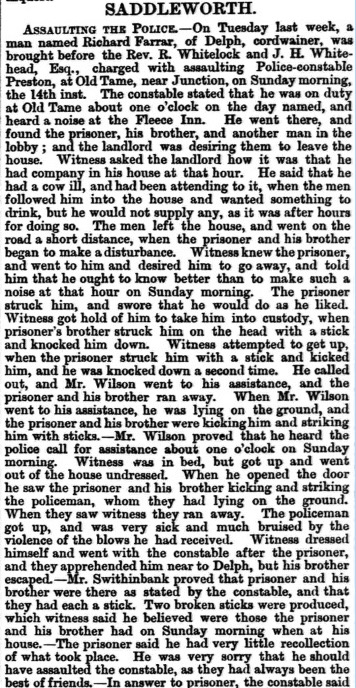
Whilst Asa Farrar’s behaviour was obviously erratic at times, he didn’t show any signs of suicidal tendencies and there was certainly no evidence of him being a highwayman. Asa’s family continued to grow and by the time of the 1871 census, Asa and Hannah had produced three sons. By 1881, another two children, Mary and Hannah Maria had been born. Asa was working as a general labourer in 1881 when the family lived at Lower Edge Road, Elland but he changed his occupation shortly afterwards and became a gardener.
Asa lived at Lower Edge Road for the remainder of his life but what is interesting is that by the 26th June 1908, when he had reached the age of 72, he had tried to take his life on three different occasions, twice by hanging and once by cutting himself with a razor. The reports state that he was unsuccessful in his efforts but something must have happened because just ten days later Asa Farrar was buried at Elland Church on the 6th July that same year.
Maybe he did finally commit suicide and end his own life…….. which leads to the next question…….. did he really try to hang himself on New Dick all those years before?
Below are more photos of this beautiful area on and around New Dick, Toothill taken on a very cold Monday afternoon, 2nd December 2019.
